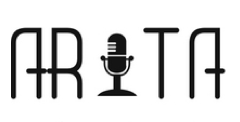GOVERNMENT + PUBLIC SECTORS – Executing strategies to help deal with crises, manage reputation, gain support for an issue or simply inform the public.
It’s critical for governments, both big and small, to have the ability to clearly communicate with the public and key stakeholders in any situation at a moment’s notice. Our issue and political specialists are connected to trends, key influencers and supporting communications services, providing us the necessary resources to help you deal with a crisis, manage your reputation, gain support for an issue, or simply infor m the public.
Our teams will work with you to develop and execute innovative strategies to help you reach your objectives.
Public Services:
The public services industry is comprised of public agencies and programs, and utilities which, though privately owned, are heavily regulated by the government. Examples of public agencies include government agencies, public schools, law enfor cement agencies, non-profit organizations, environmental services, and public transportation. This industry is unique because it is not run for profit, and it receives its funding primarily through taxation.
Industry Composition
The public services industry is composed of services that have been deemed necessary, usually by social consensus, to all people and are often provided by the government. This includes public education services, environmental services, government and public administration, law enfor cement and security, public transportation, non-profit organizations, and non-energy utilities. These programs or agencies can be operated at the federal, state, or local level, and are usually funded through the collection of taxes or via donations from interested parties.
Utilities are a little different than other services in this industry. Utilities include water supply systems and wastewater treatment; however, electric and heat related utilities are included as part of the energy industry. What makes utilities different from other segments of this industry is that they are privately owned. Since the services that utility establishments provide are vital for daily life, they are considered public goods and are under heavy governmental regulation. In urban areas, there are generally fewer utility companies, since the economies of scale created by the larger population make it so that a couple large companies can better serve the public than many smaller companies. Anything to do with energy, including electricity and heat, is classified under the Energy Industry.
Trends
Recently the public services industry has shown some trends towards coordination, especially among government operations. Coordination refers to uniting separate government agencies so they work together instead of working out-of-sync and creating redundancies. For example, the Coast Guard, Border Patrol, Customs, and Immigration and Naturalization Service were coordinated to promote better homeland security.
Government outsourcing refers to the functions or services that are now being handled by private companies instead of a government agency. For example, garbage removal services in the United States are now provided by private companies. Since private companies are driven by the bottom line, they should perfor m the function more efficiently than a government agency, resulting in a lower total cost for the consumer.
As the privatization of public services is gaining popularity, more people are questioning the efficiency of free markets. People are concerned about the social tradeoffs of using the free market, that the externalities outweigh the benefits. Externalities include pollution, unemployment, uninsured people, and income differences.
A major problem of the United States government, as well as nearly all major governments – with the notable exception of some countries, such as China, Australia, and Hong Kong – is its continuing struggle with an increasing deficit. While state and local governments are required to keep balanced budgets, the federal government has no such legal limitations. Thus, it has created a huge deficit and as a result the government must cut back on unnecessary public services.
The problem with cutting back is that consumers’ demand for public services is increasing at a rapid rate. Populations all over the world are aging, which brings increased demand for governmental services – including healthcare, retirement packages, and welfare – which further strains their budget. Simply put, governments are being asked to do more, do it better, and do it on an equivalent or reduced budget.
In recent decades, attention has been focused on the education system due to the growing importance of producing a trained and educated workforce. Municipal governments provide operating services to residents, and education is the largest item of their budget, accounting for 45 percent of all local spending. Many institutions, including government, private industry, and research organizations, are involved in improving the quality of education. In an effort to promote innovation in public education, local governments have authorized the creation of public charter schools. Distance learning continues to expand as more postsecondary institutions use Internet-based technology to conduct lessons and coursework electronically.
Industry Leaders
Deutsche Post (Germany), Union Pacific (United States), Central Japan Railway, (Japan) West Japan Railway, (Japan) Waste Management (United States)

